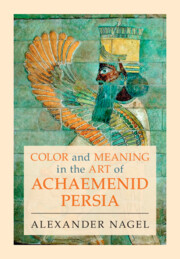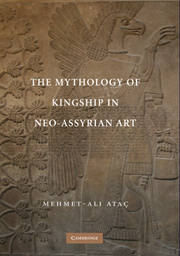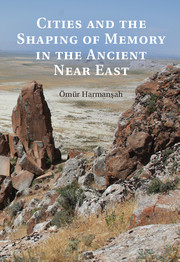Color and Meaning in the Art of Achaemenid Persia
In this volume, Alexander Nagel investigates the use of polychromy in the art and architecture of ancient Iran. Focusing on Persepolis, he explores the topic within the context of the modern historiography of Achaemenid art and the scientific investigation of a range of works and monuments in Iran and in museums around the world. Nagel's study contextualizes scholarly efforts to retrieve aspects of ancient polychromies in Western Asia and interrogates current debates about the contemporary use of color in the architecture and sculpture in the ancient Mediterranean world, especially in North Africa and the eastern Mediterranean. Bringing a multi-disciplinary perspective to the topic, Nagel also highlights the important role of theory, methodology, and conservation studies in the process of reconstructing polychromy in ancient monuments. A celebration of the work of painters, artisans, craftsmen and -women of Iran's past, his volume suggests frameworks through which historical and contemporary research play a dynamic role in the reconstruction of ancient technological knowledge.
- Includes multi-disciplinary perspectives, showing how different disciplines can interact when engaging with polychrome pasts and antiquity
- Introduces modern approaches to ancient polychromies in Western Asia within the context of current debates about ancient architectural and sculptural polychromy in Egypt and Greece
- Highlights the important role of theory and methodology in the process of reconstructing polychromy using examples from sites in Iran and in modern museums around the world
Reviews & endorsements
‘Nagel’s conceptualization of the topic of the use of color on the surfaces of architectural structures and rock reliefs is outstanding in that it is not limited in scope or method. It brings together archaeological evidence, scientific and technological analyses as well as the theoretical and ethical debates around each of them. He considers these along with historiographies of art history of the Ancient Near East, aspects of collecting antiquities in Western museums and the processes of subjecting them to cleaning and conserving in ways that were not always useful. This book is very timely now in that archaeology of the senses are gaining more attention, and materiality studies in both art history and archaeology are expanding.’ Zainab Bahrani, Edith Porada Professor and Chair of the Department of Art History and Archaeology, Columbia University
‘This printed culmination of a decades-long interest of Nagel’s on this colorful topic serves as a compelling and robust stepping stone on an increasingly populated path towards more fully understanding the vibrant polychrome world of antiquity.’ Kiersten Neumann, Journal of Near Eastern Studies
Product details
November 2023Hardback
9781009361293
325 pages
261 × 184 × 22 mm
0.96kg
Available
Table of Contents
- Preface
- Introduction: the most beautiful blues
- 1. Defining polychromies
- 2. Historiographical overview
- Part I. Approaching Achaemenid Persian Polychromies in the Nineteenth Century – Ancient Literary Testimony and Modern Discourses
- 3. Historiographical overview
- Part II. Approaching Achaemenid Persian Polychromies in the Twentieth Century
- 4. Uncomfortable truths: challenges of documenting and preserving Achaemenid Persian polychromies
- 5. A discussion: aspects of non-verbal communication in the Achaemenid Persian empire
- 6. Concluding contemplations
- Bibliography.





